Google Q&A: How Chromebooks are navigating the AI era
For years, Chromebooks have served as the loyal opposition to PCs. Google’s laptops offer many of the same Google services as you can find via the Web, but integrated into an inexpensive package for consumers and students. So what’s next?
I sat down with John Solomon, vice president of ChromeOS and education at Google, to ask about the new wave of AI PCs and how Google responds. We talk about how “generic” Chromebooks survive as Google pushes Chromebook Plus, how kids can be encouraged to game on Chromebooks as well as learn, and what Google is cooking up in response to Microsoft’s Recall for Copilot+ PCs.
This interview has been lightly edited for length and clarity.
Further reading: Best of Computex 2024: The most intriguing and innovative PC hardware
Mark Hachman, PCWorld: I saw your presentation at Computex as a way to remind people that there are more than just AI PCs. So, in light of those products, what is the value proposition of a Chromebook these days?
John Solomon, Google: As you know, we have Chromebook and Chromebook Plus. In Chromebook, it has always been about and continues to be about delivering really great value, the best place to experience access to Google services.
Whether it’s Google Workspace, or more broadly, Chrome, we work very hard to make sure that first-party products as well as the Play Store work well on Chromebook. We’ve put a lot of machine learning functionality into doing things like power management, memory management, and this allows us to put together a package that from a price point perspective is very accessible.
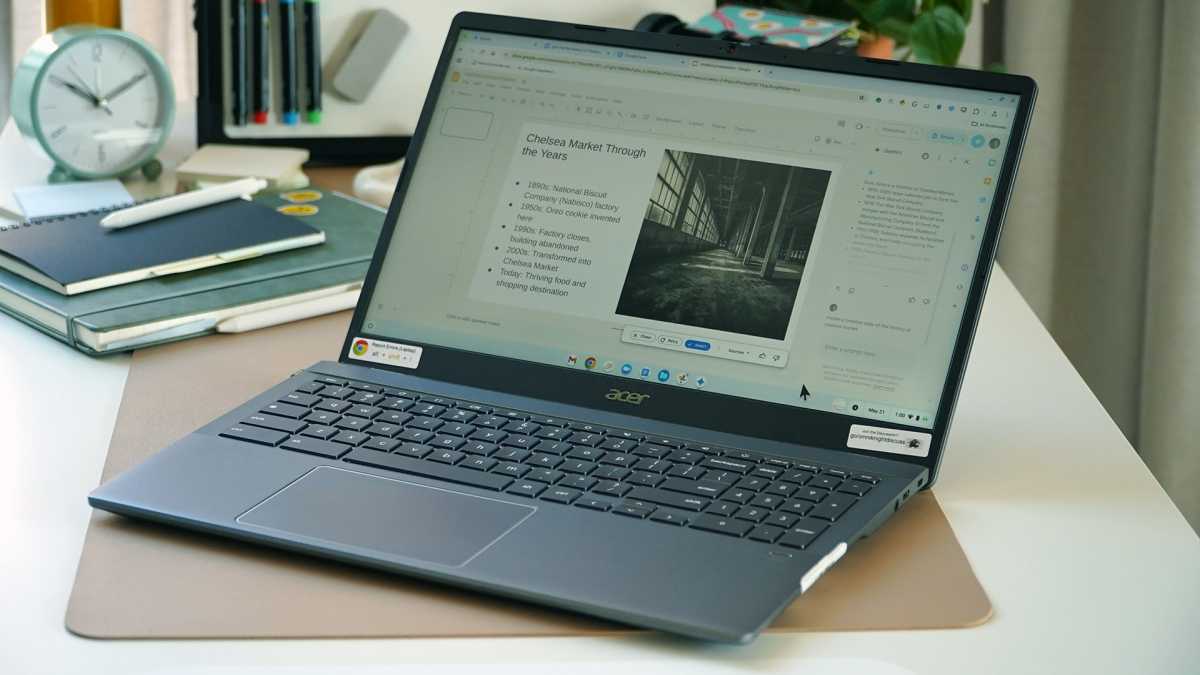

Michael Crider/Foundry

Michael Crider/Foundry
Michael Crider/Foundry
So what you see on a Chromebook is a lot of success at opening price points for a consumer across a lot of major markets — U.S., UK, I’m not sure which markets you cover –though obviously U.S. So that gives us a very strong position there.
We also obviously are very strong in education. Futuresource just came out with their latest data. And, you know, that’s largely on the back of a very affordable product, which is easy to manage on the education side, In enterprise we are increasingly a frontline worker value proposition.
So that’s Chromebook. Launched late last year, we introduced Chromebook Plus as a separate tier with significantly more memory storage and processing capability. And we did that with a view to that being our launchpad for AI. So with Chromebook Plus you have a set of cloud and on-device AI capabilities, that we’ve basically targeted and limited to be available on Chromebook Plus only.
Can you break down the proportions of all three?
Sure, sure. In terms of the installed base — so these are rough numbers, but it would be about 60 percent in the education space, 30 percent in consumer and 10 percent in enterprise, and that roughly matches shipments over a few years.
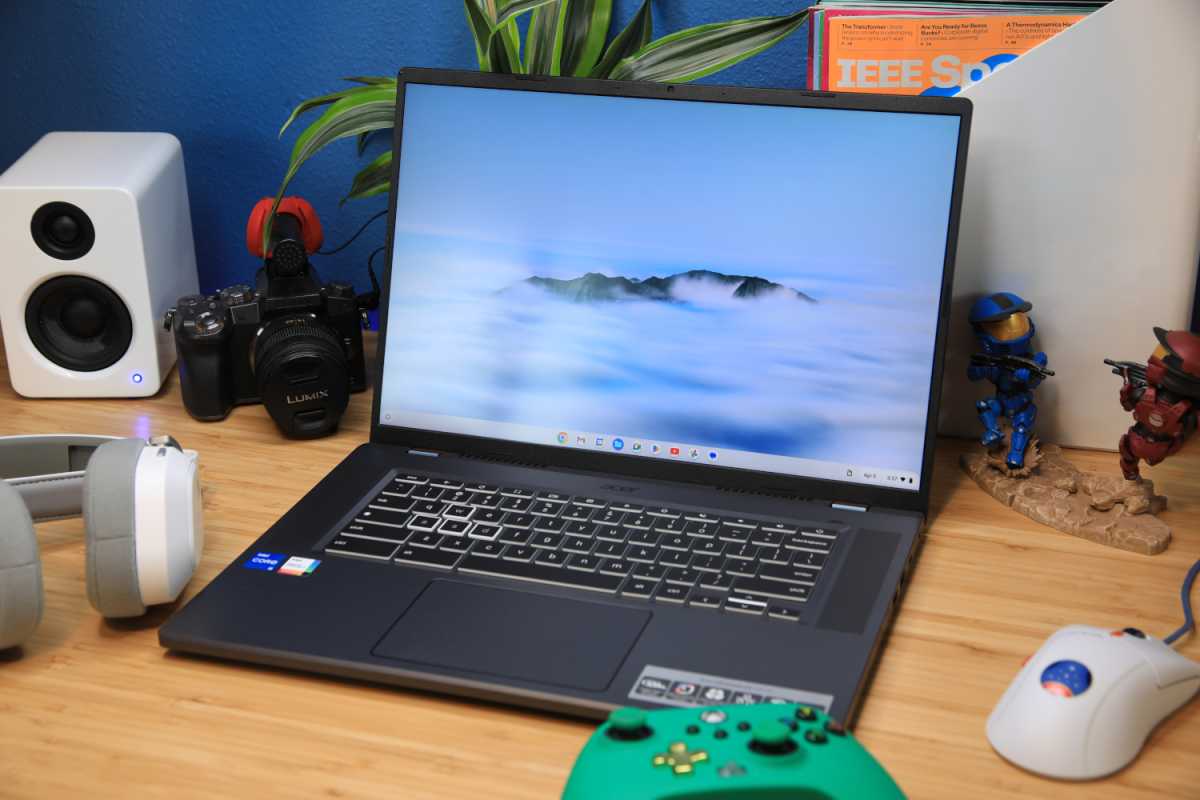
The Chromebook Plus will split the difference between education and the traditional consumer market.

The Chromebook Plus will split the difference between education and the traditional consumer market.
IDG / Matthew Smith

The Chromebook Plus will split the difference between education and the traditional consumer market.
IDG / Matthew Smith
IDG / Matthew Smith
But from a growth rate perspective, education tends to be somewhat lumpy — in sort of cycles, right? So it came through some really big years, 2020 and 2021, 2023 and 2024 have been down years for education. Consumer goes through his own ups and downs, but overall, we’ve been generally building a consumer footprint starting with an opening price point to kind of having the strongest value there, then building into the $300 to $600 range where we have much lower market share, but we think we have a very strong value proposition.
In places like Best Buy — I didn’t mention this in my talk this morning, but in January through April, 27 percent of their mix is Chromebook Plus. And that is up about — I want to say it’s up from high double digits last year, the same time. Chromebook Plus didn’t exist [then], but if you look at the equivalents on the specs, sure. What we see happening is Chromebook Plus is lifting the [average selling price] of products. And that data I shared with you is really before we did our big AI launch. So we think it’s going to obviously go even stronger.
I would assume that Chromebook Plus is pretty much limited to consumer, or does it have an education presence as well?
A very strong interest for, and possibility for, teacher devices. So that’s where we see it going into education — as teacher devices. Not many public schools can afford to spend more on devices. There are some private schools for sure, that I’ve looked at that are using it. And then enterprise, you’ll see it more in [small and medium businesses] as well as an executive kind of product.
With the bulk of shipments going toward education, does that influence the development of ChromeOS in that direction?
No. We don’t take education for granted, and we will continue to invest in education, but the education market is looking for a fairly stable product. And is not necessarily looking for the newest and greatest, like innovative new features. Whereas consumers are, you know, always looking for something new or more interesting in like, different form factors bigger displays, more premium.
So we look at consumer as a place that will really lean into innovation first, and then as the features, you know, mature and a lot of times they get cost-reduced. We’ll bring that to the education market, but really from a strategic perspective, consumer and enterprise are our strategic growth areas. Education is always going to be our anchor tenant.
It’s not necessarily on the hardware level –we shouldn’t necessarily be innovating as much. But it is a place where that we see a lot of AI possibilities, but probably not in the OS more than on [Google] Workspace. I also run Workspace.
One of the things I’m beginning to worry about is fragmentation. On the PC, we have a substantial portion of users on Windows 10, a chunk on Windows 11, but there’s also a dividing line Microsoft is drawing within that, with Copilot+ PCs and their TOPS requirement. With Chromebook Plus as Google’s vehicle for AI, where does that leave the “generic” Chromebook?
Okay, that’s a great question. We will continue to waterfall capabilities and features to Chromebook as long as the user experience is good there.
And then, you know, actually, even prior to AI, this was something we had to be aware of where there were certain experiences. You know, let’s say experiences that required a [virtual machine], high virtualization performance, where we would limit that to higher tier products. So we’ve always had to look at the reality of what is the capability of the device, and then make sure that the user experience is going to be good.
We talk to developers, which are obviously a key constituent for us because, as you know, users live and die by what apps they can get. So when we talk to an Adobe, for example, you know, and we first approached them about Chromebook Plus, they were actually super pleased because they had been frustrated before that it was very hard for them to develop for a Chromebook because they were like, well, I have to develop for a 2GB {RAM] device, all the way through to, you know, an 8GB and a 12GB device.
And so if a developer has to design for the lowest common denominator, they are not going to give their best. They’re going to be limited in what features they can do.
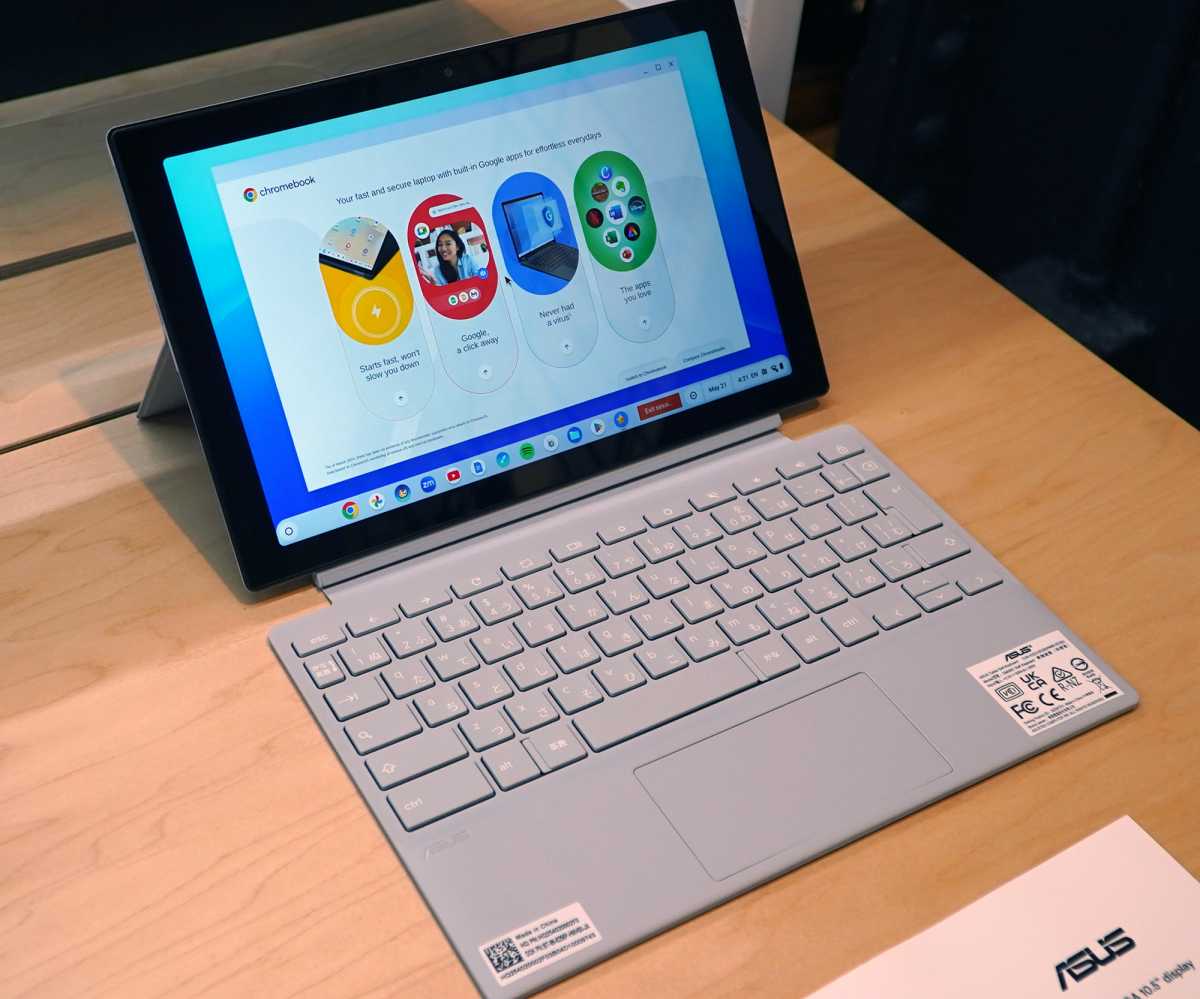

Michael Crider/Foundry

Michael Crider/Foundry
Michael Crider/Foundry
What we believe we’ve been able to do is create a tier that is based in product truth, versus some kind of arbitrary, you know, segmentation. And then you know, always make sure that we can deliver the best experience possible on Chromebook. Look, even with the growth I mentioned on Chromebook Plus, Chromebook is going to be our bread and butter for the next foreseeable future. So we will continue to make sure that that user experience is good and continues to evolve.
You know, everything else we do on the OS, whether it’s like innovation in desks, you know. This is where you can have multiple desks [virtual desktops] on your device. All those kinds of capabilities, or multimonitor, or 4k support, peripherals, when all that comes to Chromebook and all of the [machine learning] that I mentioned in the beginning is on Chromebook, the core product.
Then there are [Generative] AI features that are completely agnostic of your OS and those are obviously Google-wide: on Windows, Mac, and Chrome, and Chromebook core.
To rephrase my last question, what if any of the Gemini experiences are tied to the hardware? Because it seems like you’re doing a lot in the cloud.
No, we actually are doing a number of things on device as well.


Asus

Asus
Asus
I mean, a good example of what an on-device capability is our Recorder app. So Recorder, just to remind you, hasn’t launched yet, but we’ve been public with it. So what that does is allow you to, let’s say, we’re in this meeting here. We could record it and then we can have a transcription and summarization and translation. That capability is on device based. So that’s a clear example.
But using the CPU, not the NPU. Because there’s nothing there right now.
It would be using the current capabilities or what we have, which in this case would be CPU based. But as time progresses, we will be looking at NPU offloading and NPU processing as as those SOCs come into our lineup. We will have higher NPU capable devices in the future.
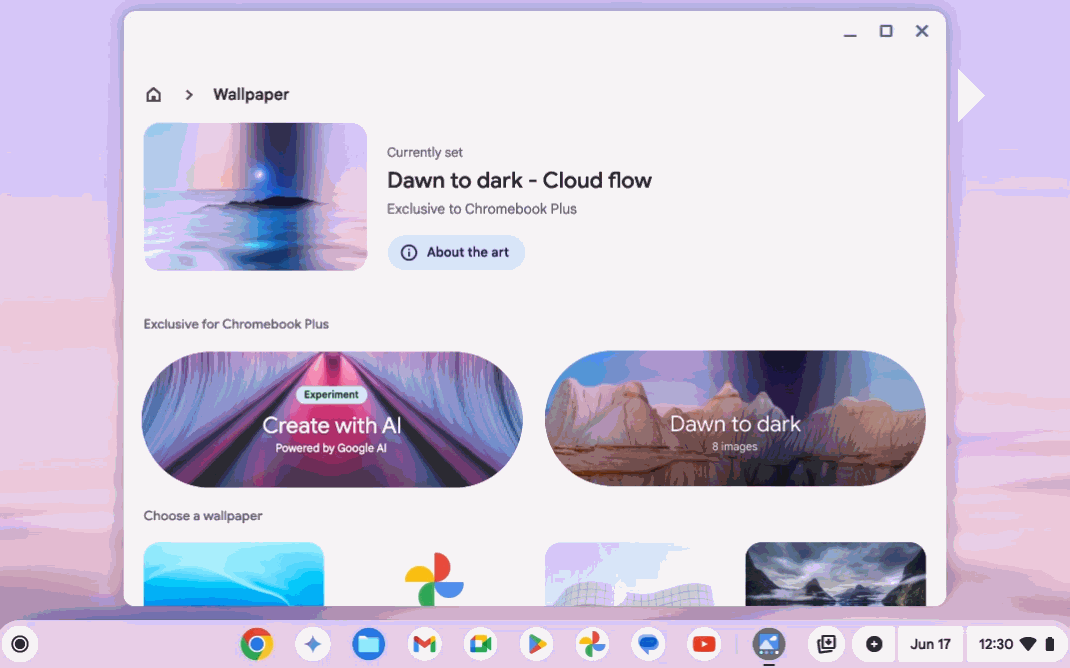 Generative AI on Chromebooks.
Generative AI on Chromebooks.
 Generative AI on Chromebooks.
Generative AI on Chromebooks. Generative AI on Chromebooks.
Generative AI on Chromebooks.Even if there’s processing on the cloud, we have deep integrations into the OS that requires performance at an on-device level. An example is the personalization of your background that we have in videoconferencing. We have a capability on Chromebook Plus which is across all applications: Zoom, Teams, obviously Google Meet. It is built into the OS even though it may use some cloud-based capability for processing.
It requires a lot of headroom in the on-device memory, for example, that would not be feasible to be doing that virtualized, personalized background if you had a lower power device.
People tend to think of it as like a hard line. But there’s shades of gray between where it might be generated in the cloud to be able to run it actively [on the device]. You’d become memory bound, locally.
It’s interesting that we’re talking about Windows on Arm at a time when Chrome OS on Arm has existed for years. Chromebook Plus uses modern Core processors and Ryzen processors. But none of these processors have NPUs. But you have relationships with the Qualcomms of the world, Mediatek, and so on. I’m assuming that you’ll have these options in the future?
I can’t go into details on it. But, absolutely. You know, today, we have Arm today quite a healthy amount of it, and we expect to have more Arm in my portfolio going forward. We also expect Intel to continue to be competitive of course but certainly direction of travel is as you know. There’s going to be more Arm you know, in a portfolio.
Editor’s Note: After the interview ends, Solomon added that Google continues to have strong relationships with Intel and AMD.
Whatever the chip — Qualcomm’s Snapdragon X Elite, Intel’s Lunar Lake, AMD’s Ryzen AI 300 — you’ll have a number of TOPS to eventually play with. At that point, how do you start using it?
I think a capability around image generation, things which today maybe use a lot of CPU, would be just more efficient on an NPU. We can run Gemini Nano on Chromebook Plus and we can run it really well.
 Will Chromebooks eventually run on Qualcomm’s Snapdragon X Elite? It seems likely.
Will Chromebooks eventually run on Qualcomm’s Snapdragon X Elite? It seems likely.
 Will Chromebooks eventually run on Qualcomm’s Snapdragon X Elite? It seems likely.
Will Chromebooks eventually run on Qualcomm’s Snapdragon X Elite? It seems likely.Mark Hachman / IDG
 Will Chromebooks eventually run on Qualcomm’s Snapdragon X Elite? It seems likely.
Will Chromebooks eventually run on Qualcomm’s Snapdragon X Elite? It seems likely.Mark Hachman / IDG
Mark Hachman / IDG
In a world where there was more NPU: you would have it there to run on NPU because you would be more power efficient. And you would free up the CPU for other things.
So maybe I’m not answering your question directly but to say that it’s not so much the particular workload — though I would say image generation is one — but it’s more around, being able to distribute through the scheduler and be able to make sure that you’re not impacting the number of tabs you have open. No one’s going to love GenAI if it bogs down the device.
Your market is broadening. You have an education market which really doesn’t want to spend anything on a Chromebook device, and then you have these more expensive versions of Plus devices. You’re going to have quite a spread in terms of price points and expected features. It doesn’t seem like you can maintain consistency.
If you think about it, our product strategy is evolving from Chromebooks being a really good utility device for families, for people with kids in the home who need another device to people who maybe just want a simple computer. But we’ve been on a journey over many years to increase the capabilities of what’s available.
If you look at the app catalog on Chromebooks, and you compare it to five years ago, to two years ago now. Look at gaming, look at Adobe, look at Canva or any of the capabilities of what’s possible from cloud-based software — it’s just leaps and bounds. So I think I inherent product catalog and therefore our product offering is going up and to the right from a capability perspective.
With Chromebook Plus and GenAI, it takes like a step function now, because we’re we’ve created this hardware floor and we’re saying we’re gonna bring these really enhanced capabilities.
But I think what’s really different between us and maybe what you’ve heard from others this week, and over the past few weeks, is the price point: the devices we launched at our New York event a few weeks ago. You know, we had like seven or eight Chromebooks starting at $349 going to $699, right?
What we think is going to happen is this general consumer interest in the whole space in general is definitely going to drive some degree of interest in a refresh and people saying, maybe it’s time I got something new. At the end of the day most people are, to some extent, budget-constrained and want to get good value. And so we think we are in a sweet spot in terms of people coming in to see what’s available.
We’re investing a lot in in store demos, training lots of folks in the store and as well as online. And we believe we’re going to pick up quite a lot of that when people realize, hey, wait, for $399, $349 I can get a really nice package with AI capabilities. I don’t need to go all the way to, you know, $1,000 or so.
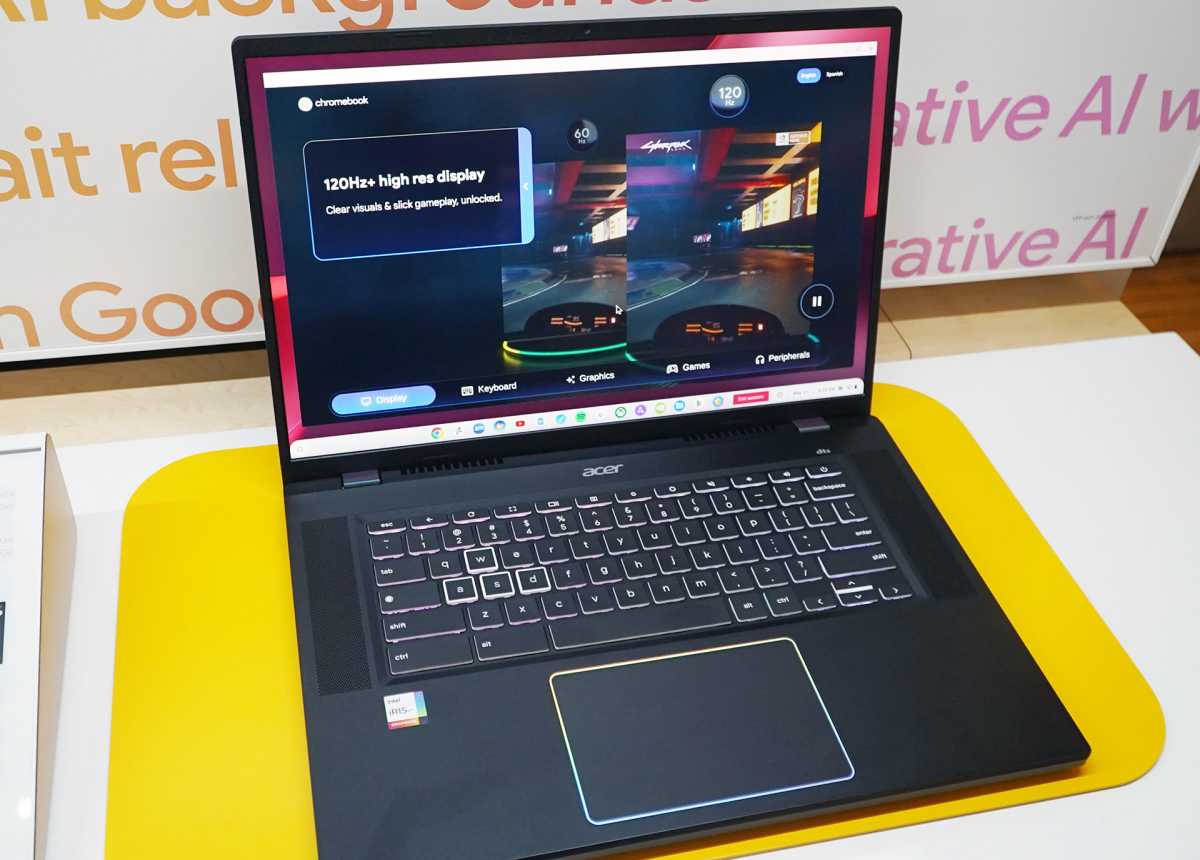 Google’s challenge is to get kids gaming on Chromebooks. Chromebook Plus is the company’s answer, with high-res, high-refresh-rate screens and more.
Google’s challenge is to get kids gaming on Chromebooks. Chromebook Plus is the company’s answer, with high-res, high-refresh-rate screens and more.
 Google’s challenge is to get kids gaming on Chromebooks. Chromebook Plus is the company’s answer, with high-res, high-refresh-rate screens and more.
Google’s challenge is to get kids gaming on Chromebooks. Chromebook Plus is the company’s answer, with high-res, high-refresh-rate screens and more.Michael Crider/Foundry
 Google’s challenge is to get kids gaming on Chromebooks. Chromebook Plus is the company’s answer, with high-res, high-refresh-rate screens and more.
Google’s challenge is to get kids gaming on Chromebooks. Chromebook Plus is the company’s answer, with high-res, high-refresh-rate screens and more.Michael Crider/Foundry
Michael Crider/Foundry
My kids use Chromebooks. They use them all day in school, come home and do homework — and then set them aside for a Windows machine. How do you convince kids to use Chromebooks for both work and play?
Yeah, definitely something we’ve focused on. I think that one of the sort of downsides of our success at school is that a lot of kids have a Chromebook that is managed, which means it is limited to what they can access and the fact you know, there is a lot of gaming available. There’s Minecraft, there’s Roblox, but it’s a question of whether or not the school lets them go there.
That’s a different question?
Yes. So here’s what we’ve been working on, just to give you an example of this particular challenge.
We’re trying to work with schools to say, look, when someone takes a Chromebook home, they should be able to log in on their personal Google ID and operate under the family guidance or Family Link, where you as a parent then can decide what is it that you are comfortable with what your child is doing.
There’s a mix on whether schools are doing this — they should be doing this, because it’s out of their jurisdictions and becomes the parents’ responsibility. But the large schools are risk-averse and don’t want to go there.
So one thing we’re looking at is, how can we use Family Link more effectively to get Chromebooks out of that managed mode and into a regular mode, run by Family Link. The second thing we’re doing is just making sure games run really well on Chromebooks. We have a program going on for some years with developers, particularly gaming developers to improve the quality of gaming on Chromebooks because that is like obviously the the litmus test for most kids is, can I do Roblox on it, can I do Minecraft.
Minecraft was a big breakthrough for us. And it’s one of the highest revenue games. We are relevant to Minecraft, we are relevant to Roblox, if you talk to those developers on Chromebooks. So those are those are examples of where we believe we can start getting kids to see this as more of I do my homework on it; I can also have fun on it.


Mojang

Mojang
Mojang
And I think that the other piece is more desirable devices. So what we would like to do is have parents — and we saw this happen during COVID — is if parents buy the devices, they’re likely to buy a nicer device than the school. And a lot of times kids are then seeing wow, I can actually get something with a bigger higher resolution display, backlit keyboards, that’s more attractive to them than what they got.
The other interesting thing is even though I did say that schools are very budget-constrained, and they are, we are seeing even public schools looking to understand that they need to look at the quality of experience and not just buying the very cheapest. So we’ve seen some of the really big districts like L.A and New York [purchasing] higher-end products than the previous generation. So we think that’s helped, because it’s an overall better experience.
But what’s the typical refresh cycle in the school systems? Because as far as I know schools want to hold on to them for as long as they can.
Four years.
That’s typical?
Yes.
But the support lifespan of a Chromebook has been extended…
Yes, ten years.
The reality is that kids are pretty hard on devices. But we want to make sure that it’s not the software that’s the reason. We want to be like — there was this kind of meme going on around, you know, Google’s no longer updating devices. We were like, look, we made it safe and we’re not going to make software the limitation.
If the device has been banged up, if the school wants to get newer devices and capabilities, then let that be the driver, but not software updates. So that’s why we took this position where… I am not sure if you are aware of this, but we have the longest support lifecycle of any operating system.
You recently announced hands-free gesture control for Chromebooks. Was this an accessibility feature or a way to show off machine vision on Chromebooks?
Initially the genesis of it was accessibility. We have a very strong accessibility team at Google that works with people who have impairments. And that was the genesis of it. I think what we’ve recognized though, is that it has use cases beyond folks who may have, you know, accommodations, and so we really just want to put it out there and make it something that’s available, both from an accessibility and the general interaction model perspective.
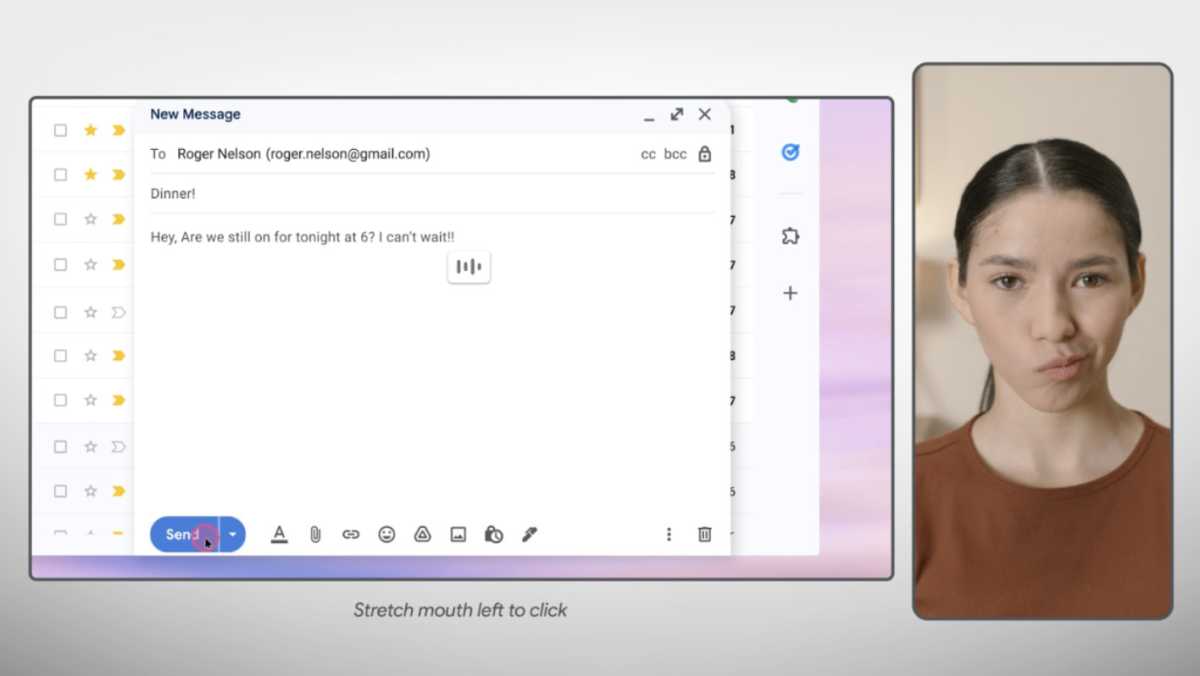 Facial gesture controls on ChromeOS.
Facial gesture controls on ChromeOS.
 Facial gesture controls on ChromeOS.
Facial gesture controls on ChromeOS. Facial gesture controls on ChromeOS.
Facial gesture controls on ChromeOS.And really look at you know, who gets the most use of it. I think you’ve probably picked this up, though. This has been an area that, you know, people demonstrated this potential for, like, seven, eight years, but it’s the intersection of AI and this capability that has suddenly accelerated this and made it really feasible. So that’s, that’s kind of the cool thing about it. And we built it natively into the OS as well, which I mentioned today, which was pretty cool.
I wanted to keep this discussion to Chromebooks, but I do want to ask you a question on productivity, and merging Gemini with the ChromeOS environment. How do you see that evolving?
I think one of the things that you probably saw in our presentation today was what we believe strongly in is bringing Gemini into the application flow versus having it being off on the side like in a side panel. So whether it’s in Workspace, or in Docs and Sheets, Gemini is actually is nicely integrated.
And the way we’re also going to do it on Chrome OS is if you’re in Messages, you’re in a PDF, it’s right there. So our thinking is that it needs to be needs to be integrated for users to adopt it. What we’ve seen from early studies is when it’s not integrated, it gets some initial use, and then it doesn’t become part of that the everyday use of the product. And so whereas we’ve seen much higher adoption when it’s in the flow — I think you’re correct to say though that we’re in early the stages, and we’re going to be learning from usage and making changes.
We’re looking at questions like, does it really drive the productivity improvement, for example? For teachers, where they can take hours out of their week by using it Workspace in classroom for lesson planning. So we have it in the lesson planning module lot of Classroom.
At the OS level, we want to we want to look at it a way to, for example, surface your tabs in a way that is really useful for you. If you’re working on an article on something that maybe is spanning a few weeks, and you put it aside for a bit, you’d like to have a way of grouping that work in a very kind of logical way without you having to build the file structure around that. So those are the kinds of areas that we’re looking at, and we’ll be looking at user adoption as a key indicator of what’s working.
You recently showed a demo of a woman using AI vision as she moves about her workplace. (Project Astra.) That seems like a phone experience, and not for a Chromebook. Can you bring that to Chromebooks?
Yes, actually. I think it is very suited. I mean, you’re partly right, as it’s not a computer experience.
However, I think there’s a piece of it which is very relevant, which is this notion of having some kind of context and memory of what’s been happening on the device. Think of something that’s like, maybe viewing your screen and then you walk away, you get distracted, you chat to someone at the watercooler and you come back. You could have some kind of rewind function, you could have some kind of recorder function that would kind of bring you back to that. So I think that there is a crossover there.
We’re actually talking to that team about where the use case could be. But I think there’s something there in terms of screen capture in a way that obviously doesn’t feel creepy and feels like the users in control. I see you smiling…
Yes, because it seems like you’re describing a Google version of Microsoft’s Recall.
I mean, I guess you could put it that way. But I think that it’s anything that to some extent is capturing and buffering, you know, which is clearly what Astra was doing because it could remember where the user set their eyeglasses? And they were next to the apple.
All these models have this capability to do this. And if they can do it multimodally and i they can do it with some kind of assistive capability, then I think the user is going to be interested.
I’m not going to talk about Recall, but I think the reason that some people feel it’s creepy is when it doesn’t feel useful, and it doesn’t feel like something they initiated or that they get a clear benefit from it. If the user says like — let’s say we’re having a meeting, and discussing complex topics. There’s a benefit of running a recorded function if at the end of it it can be useful for creating notes and the action items. But you as a user need to put that on and decide where you want to have that.
I think putting the user in control, and making sure there’s a clear benefit of why you are recording is the way we look at it.
Chromebooks